Linking In: The Internet of Things in the Dental Practice
Communication is key when it comes to best practices in the dental office. From the maintenance room to the operatory, the Internet of Things enables communication that will improve the dental practice by leveraging cloud technology.
Linking In: The Internet of Things in the Dental Practice. Photo courtesy of chesky/stock.adobe.com
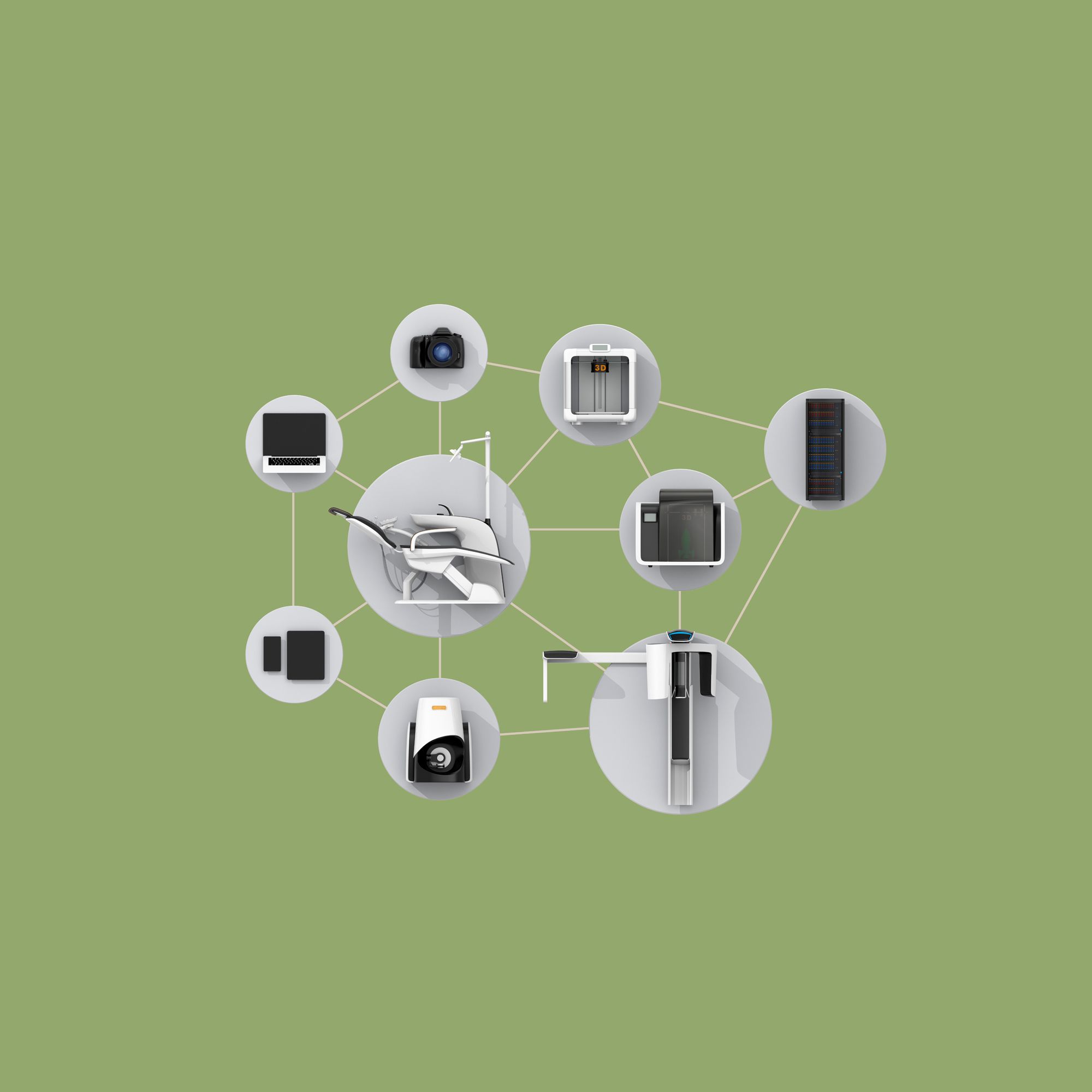
In an increasingly connected world, the dental industry has made great strides in keeping up with the latest technology to remain connected. When considering what gives an edge in many industries, communication and connection are mainstays in the conversation.
When we hear the word communication, our first thought may go to face-to-face, interpersonal conversations that communicate ideas and concepts through in-person or virtual talks. In a dental practice, communication is key to just about every aspect of the office. From the front office to the operatory to the dental laboratory, effective communication keeps workflows running smoothly.
In well-performing dental practices, data communication between devices can be a huge boon for both practices and labs, eliminating hassle and streamlining workflows. For instance, having an intraoral scanner send a scan file to the practice management software, which then aggregates the data in the patient file, can make workflows smoother. This concept, the Internet of Things (IoT), has existed in other industries for a while but is relatively new to dentistry. What it comes down to, basically, is the idea that devices can all connect together and communicate without human involvement.
MyMouthWorks aggregates important patient data that then gets sent to the clinician. Clinicians can then use these data to make informed treatment planning decisions for the patient in the future. This connectivity is key and why MyMouthWorks could be a valuable tool in any size dental practice.
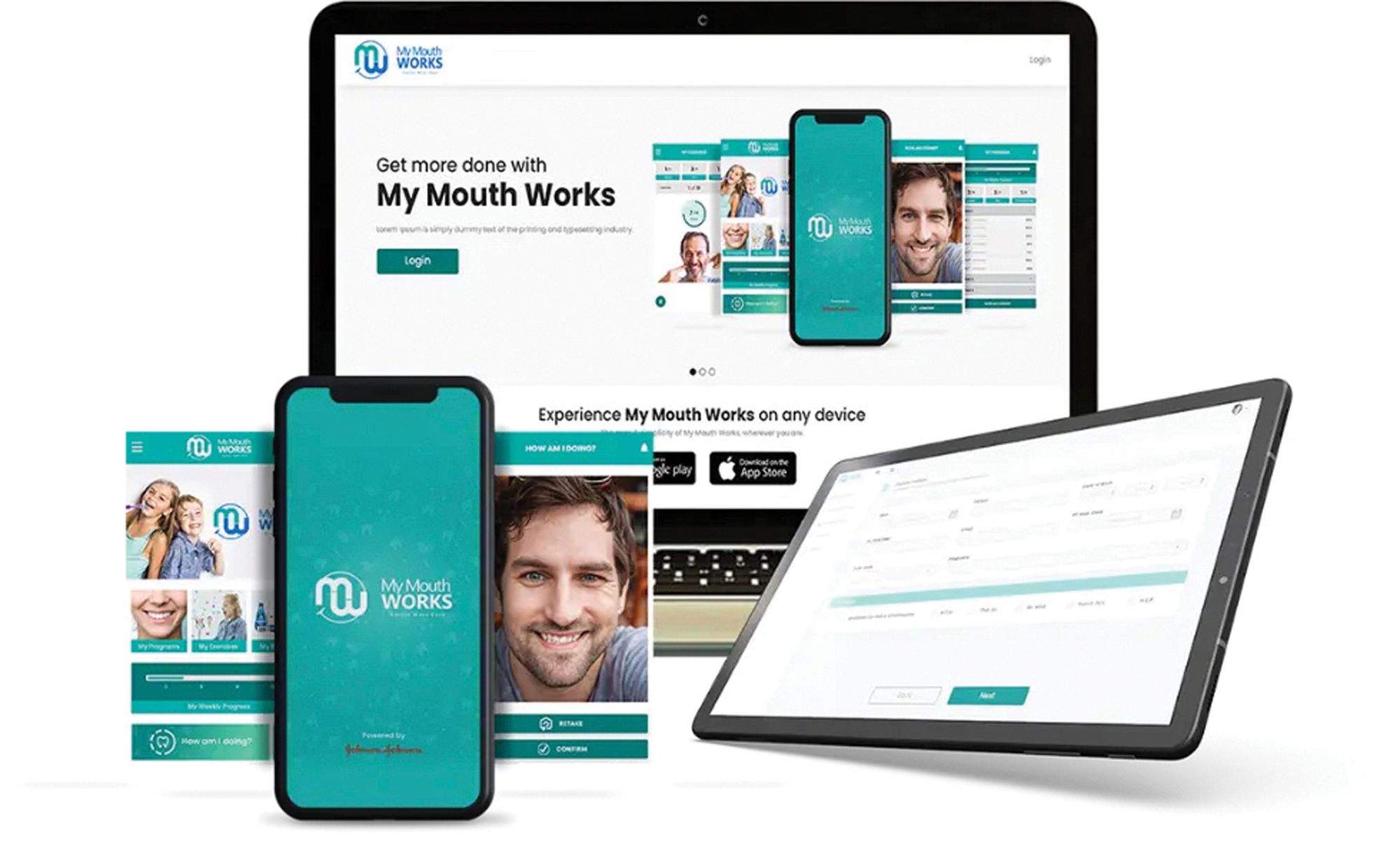
IoT has existed in the consumer arena for some time now. Think of a toothbrush that can send your brushing data safely to the dentist or hygienist. They can observe these data and make informed decisions on how to best give guidance to the patient. Outside of the dental industry, think of devices like the Ring doorbell or even an Amazon Alexa. These devices connect through IoT to create data or personalize consumer recommendations.
Applying the concept of IoT to the dental industry in the operatory and beyond can offer some interesting insight on where this technology might lead us. Not only does it get rid of the physical restriction of being stuck at a desktop, but it also makes remote monitoring a lot easier, too. In times like the COVID-19 pandemic, when many folks did not want to leave home, the IoT could provide insights to their medical professionals that made telehealth and telemedicine easier to get people the care they needed.
The IoT lets devices and dental practices reach their full potential and eliminates age-old hassles, according to DentalEZ COO Heather Trombley.
“Humans communicate information through words and pictures while machines, and now dental equipment, communicates through data,” Trombley says. “With IoT, that data can be harnessed and aggregated to provide useful information. That is the basis for what we call ‘smart’ devices. And when devices are smart, they can tell us things and do things for us. In dentistry, that can mean more focus on the patient and less focus on all the equipment that surrounds them. And that’s in a nutshell, what the Internet of Things is and does.”
Overjet’s AI platform analyzes and annotates radiographs in real time, using the power of IoT.
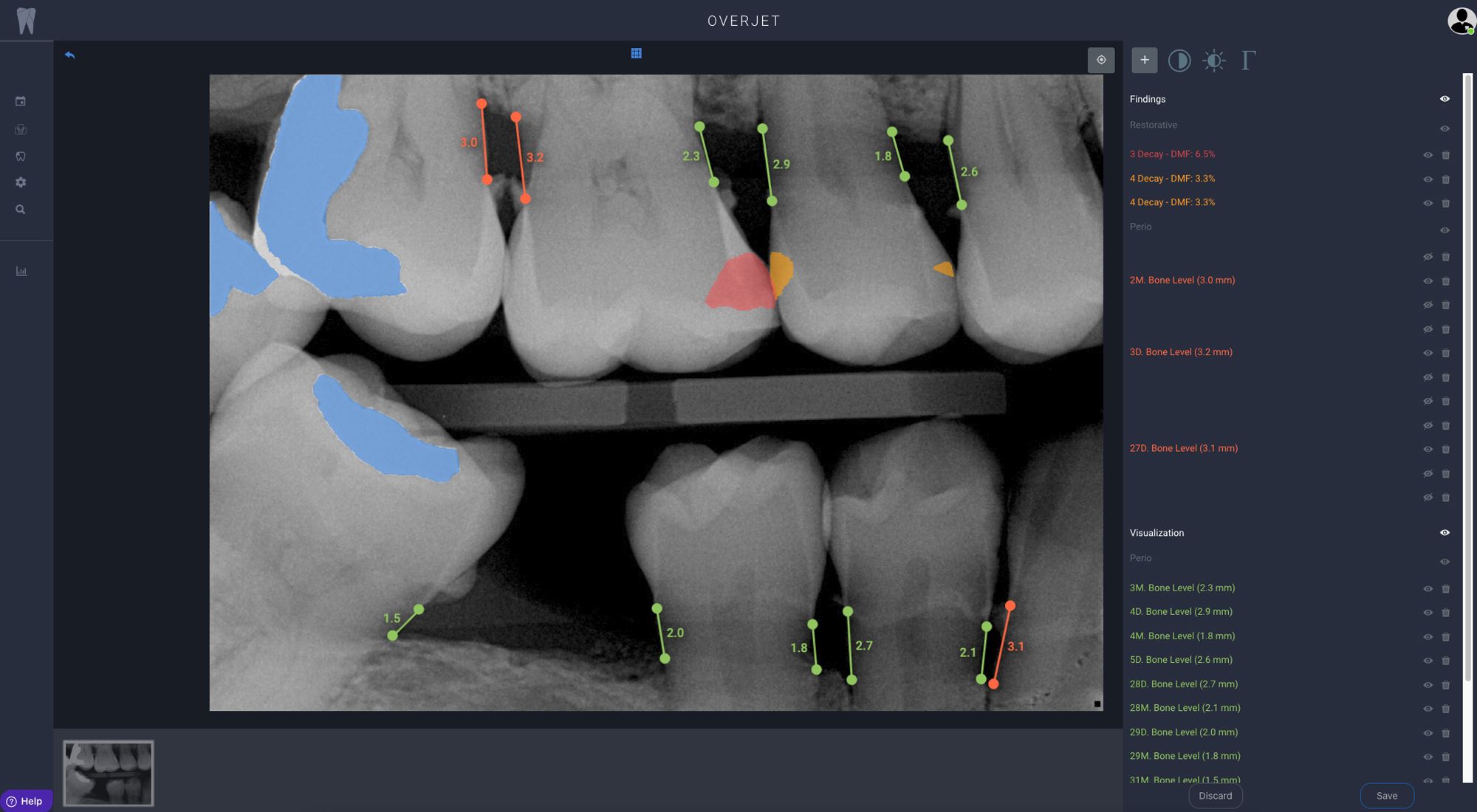
Digital Dentistry
The IoT can make vital connections in what Michael Young, DDS, who practices at Forever Young Dentistry in Sterling Heights, Michigan, describes as the “digital dentistry puzzle.” Dr Young is a practicing clinician and educator on CAD/CAM and digital dentistry. He stresses the importance of choosing digital dentistry to make things more efficient for both practice and practitioner. “It’s really important you choose a technology that’s going to communicate easily with other technology and software you use in your office,” he says. “Or you might send it to a lab. It needs to be [usable] in other software a lab might use.”
This communication is the crux of what IoT does. Being able to expand it beyond and into digital dentistry can put a dental practice ahead of the curve. This includes scanners, software, CAD/CAM, milling, and 3D printing, and more.
Dr Young uses Planmeca’s PlanCAD® CAD/CAM system as well as their PlanMill® 50 S milling unit. These robust systems, combined with Planmeca’s Romexis® imaging software, create a powerful and effective digital dental arsenal, according to Dr Young.
“[It] is a game-changer because I can do my workflow essentially on 1 workstation or laptop. It’s saved on a server, and then I let it go to another computer in the office and continue the workflow. They’re all in the same suite,” he says. “It’s very streamlined with that software [Romexis]. I can also take those files and send them to the lab, and they can use them in different software [such as] 3Shape, exocad, or something that they might use in a lab. [It’s] very important to be able to import and export files easily and seamlessly without having to jump through extra hoops.”
Prior to the IoT connectivity of these digital dental devices, implant case planning was a longer and more arduous process for Dr Young.
“I would have to send the patient out to get a 3D image. As soon as you send them out the door, you’ve lost control of the case. We know people don’t take medications properly when prescribed. How long is it going to take them to make the appointment to go to an imaging center to get this image taken? Then they put it on a compact disc. And it gets sent to the to the lab, and the lab emails me and says, ‘Hey, we need to set up an online appointment to view this.’ We agree on a time, we get an online appointment, they design the stuff, and then they send it to me. That could take months in my office,” Dr Young says.
This process, which used to take months, can now be done in as little as 30 minutes. “Because everything just talks to each other,” Dr Young says. This same-day dentistry element has become a powerful marketing tool for dental practices, letting patients know the value of the clinicians’ investment in digital dentistry and IoT.
Dr Young recalls the story of a patient who came in with 3 missing teeth, needing repairs for comfort and everyday function. “She came into my office. I did the intraoral scan with my Emerald™ S impression scanner. I exported those files to PlanCAD Premium, which is just exocad rebranded. I designed a partial [and] sent it to the printer, and in 90 minutes she left with a flexible partial replacing 3 teeth that looked incredibly natural.”
Dr Young uses Planmeca’s digital dental suite to optimize the workflow in his dental practice. From scanning to milling to designing, Planmeca covers the full armamentarium for any dental practice wanting to go digital. The PlanMill 35, featured here, is a wet/dry mill and is a part of the Planmeca FIT® CAD/CAM system.
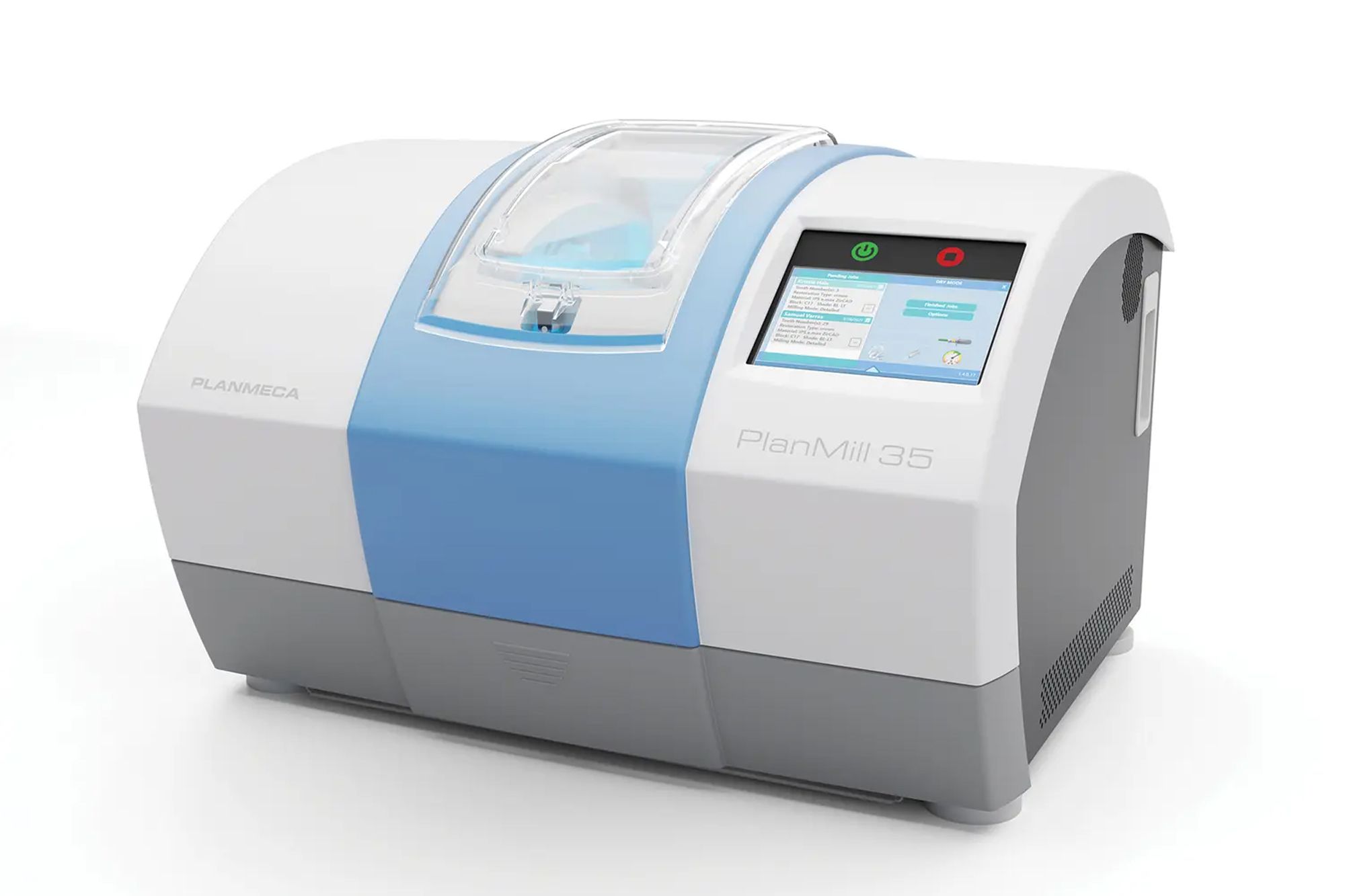
All this data communication is done securely through cloud software, with each company having specific data security safeguards in place to protect patient health information (PHI).
Getting Into the Mechanics
Digital dental devices make data sharing in the practice much easier, but there are ways to incorporate IoT beyond patient-facing aspects and into the nitty-gritty of a dental practice. The mechanical room in a dental practice is, in many ways, the heartbeat of the office, according to Trombley. It contains the powerful equipment needed to keep things safe and efficient, including air compressors, vacuums, and amalgam separators.
“Think about the mechanical room or the utility room in the dental office,” Trombley says. “It’s in the back. It’s noisy, it’s small, it’s complicated, but it provides vital services of suction and the delivery of compressed air to run the equipment. Therefore, incorporating IoT in the mechanical room can provide many benefits for the dental practice.”
Incorporating IoT within the mechanical room can offer a way for dental practices that are looking to optimize their workflows while simultaneously making it easier for clinicians who may not understand the mechanical intricacies of this room.
“Today, you can now monitor how those devices are working without an assistant or staff member going in there and trying to decipher the control on the device to understand what’s going on with it,” Trombley says. “DentalEZ, as the leader in this space currently, has incorporated sensors in the product, which gather the operating characteristics on devices, and then the unit can send data to the cloud.”
These data are made available to both the practice, and if wanted, the practice’s service provider, allowing each to monitor equipment and diagnose the equipment remotely.
“What’s more, through IoT you can actually control the devices remotely,” she said. This is a tremendous benefit to practices. For example, one could shut down a vacuum running unnecessarily over the weekend with a touch of button on a cell phone. Currently, DentalEZ is the only provider of such technology.
Another benefit to monitoring performance remotely is that the device itself can indicate when it’s time to do any preventative maintenance. IoT in the mechanical room cuts the hassle for clinicians.
“As you see more and more of this come online and systems become smarter, the clinician and the staff will have to spend less time troubleshooting and figuring things out, because the devices will adjust and make decisions accordingly,” Trombley says.
Artificial Intelligence
One technology that is contributing to the IoT is artificial intelligence (AI). Dental practices are using AI technology like Overjet to connect to the digital imaging system, the practice management system, and Overjet’s cloud platform to provide clinical insights and operational efficiencies.
“Overjet aggregates information from multiple sources,” Dr Robert Kolts, DDS, Clinical Director at Overjet says. “It automatically uploads radiographs in real-time to the Overjet cloud platform, then analyzes and annotates them. The AI detects decay and quantifies bone level measurements to aid in diagnosis and patient education.”
Overjet also analyzes the patient database, cross-referencing 18 months of radiographs with the treatment plans in the practice management system to identify potential restorative and periodontal opportunities. Clinicians can review past and current x-rays and compare the quantified bone level measurements and level of decay over time. Then they can show the images to the patients in the operatory or consultation room, thanks to the systems being connected through the IoT.
“It’s facilitating the communication between all of those entities,” Dr Kolts says.
All of the information is available through Overjet’s cloud-based platform, enabling the software to send and receive data in real-time. The IoT, reinforced with strong, HIPAA-compliant data security, makes it possible to securely connect to these systems outside of the traditional confines of the practice. That’s valuable not only for providers, but also for clinical directors who provide mentoring and collaboration.
“A lot of practices do lunch and learns, and the clinical director can remotely access Overjet’s findings and lead a discussion on what the artificial intelligence platform identified. It helps the teams to calibrate themselves,” says Dr Kolts.
“They can discuss what are the protocols for diagnosing periodontal disease, for example. They can talk about caries and when is it appropriate to watch versus treat, using the objective measurements provided by Overjet as a starting point for their conversation,” says Dr Kolts.
IoT is driving the development of AI, too. AI processes vast amounts of data to train the algorithms. Those data are sent securely over the internet following a basic formula of: communicate through networks, aggregate through integrations, analyze via AI, and display the results.
For example, when a dental practice submits a radiograph as part of a dental insurance claim submission, it’s connected by the IoT.
Overjet’s AI supports both dental practices and dental payers, with most of the large insurance carriers using Overjet’s AI platform to analyze claim submissions. This speeds up the claim submission process, quickly identifying claims that may be missing information and automatically sending requests for more information back to the provider. Overjet also automatically reviews preauthorization requests and claim submissions for medical necessity based on the payers’ guidelines, which also speeds up approvals.
Gone are the days when information had to be sent via mail or fax. With the IoT connecting different systems in the dental practice, it’s easier and more efficient than ever to collect, analyze, and share information. And that helps ensure patients receive the treatment they need faster.
Data Security
With all this discussion surrounding data communication and sharing, it would be remiss not to consider the security implications of the IoT. Because they have vital PHI, dental practices are at a specific risk when it comes to data security and protection. To stay HIPAA safe and compliant, there are tools built into specific cloud platforms to protect data.
Cloud software often has very specific safeguards in place to keep patient data protected, even as it’s communicated from device to PMS.
These safeguards include the encryption of data, 2-factor authentication, restrictions on who has access to these data, and a variety of other software safety solutions. This begins with an internal encryption on a database, which, in turn, can then be stored in Google or other cloud-based platforms that have those additional layers of security built in.
It is incumbent on dental practices and service organizations to protect this important electronic PHI as bad actors may find their offices as easy targets for personal and private information.
As with any software as a service (SaaS), IoT needs to go through specific measures to ensure the data encryption and security standards to protect patient information in the dental practice are met. This can be done by following industry standards, but there are ways to strengthen security even further.
When considering how IoT can work in the maintenance room, DentalEZ does something that further safeguards the dental practice and its data. Trombley calls it their “secret sauce.”
“We deliberately chose to enact IoT without going into the dental practice’s Wi-Fi and network, where we could inadvertently create a window into their data. All our information is passed in data pockets, through cellular communication. So we never breach because we never enter that dental network,” Trombley says. “Furthermore, we protect the data in the cloud through our own cybersecurity measures; there is no way to hack into our data stream to create any sort of concern for the practice. You do have to think about security in your design and you do have to protect data.”
The Future of IoT
The landscape of dentistry is changing, bringing technology along with it. IoT encapsulates where the industry is heading: fast, efficient, and powered by the need to innovate. What remains to be seen, however, is how it will evolve in the future.
Conceptually, IoT is not new, and has existed in other industries for enough time to create standards. Dental is a type of “Wild West,” as Trombley describes it, and there is potential for certain parties to leverage IoT in ways we have not seen yet.
“As IoT becomes more prolific and operational data gets linked to practice management data to glean even more insights into the efficiency of the dental practice, it will be important not only to think about security, but also to think about who has access and the ability to use all that data,” Trombley says. “DentalEZ has already begun thinking ahead about standards for connectivity and built in the safeguards and access points for the data. But if manufacturers go to market and haven’t thought through it all, it could be a cause for concern.”
This concern can inform many choices regarding dental IoT in the future and will hopefully create a set of standards that keep practices and patients safe from predatory tactics.
As far as standards go, Dr Kolts believes cloud software that ensures data ownership can empower clinicians to use and become more comfortable with cloud-based technology, preventing their data from being at risk from outside actors who could leverage their data for unintended purposes.
“You can move [data] to the cloud yourself. As that happens, there’s going to be more demand for application program interface access to various platforms, so you can aggregate all your data together,” Dr Kolts says. “That’s very important because if you sign up with a cloud hosting provider, you have to know the data are actually yours [and] that you can get those data back. Or if you wanted to leave the service, that they’re not going to retain those data and use them for internal development or things like that.”
While it is important to acknowledge and safeguard against the potential for risk, there is also great potential for stronger connectivity, which will in turn lead to more efficient and helpful treatment/case planning, according to Dr Kolts.
“Technology is only going to get more interconnected,” he says. “Now you’re aggregating data from that [IoT], and you’re using them to make potential treatment decisions at the dental office.”
Trombley echoes that sentiment.
“IoT should end up being all about the patient, from enabling better treatment decisions to improved operational efficiency in the practice; all so that focus is rightly on the patient,” Trombley says.
At its core, IoT in dental can help patients in a quicker, more efficient way, which is the most important thing, according to Dr Young.
“Money is not the most important thing; taking care of the patient is the most important thing,” Dr Young says. “And with that in my mind, the digital dentistry [and] IoT technologies work synergistically to do both.”
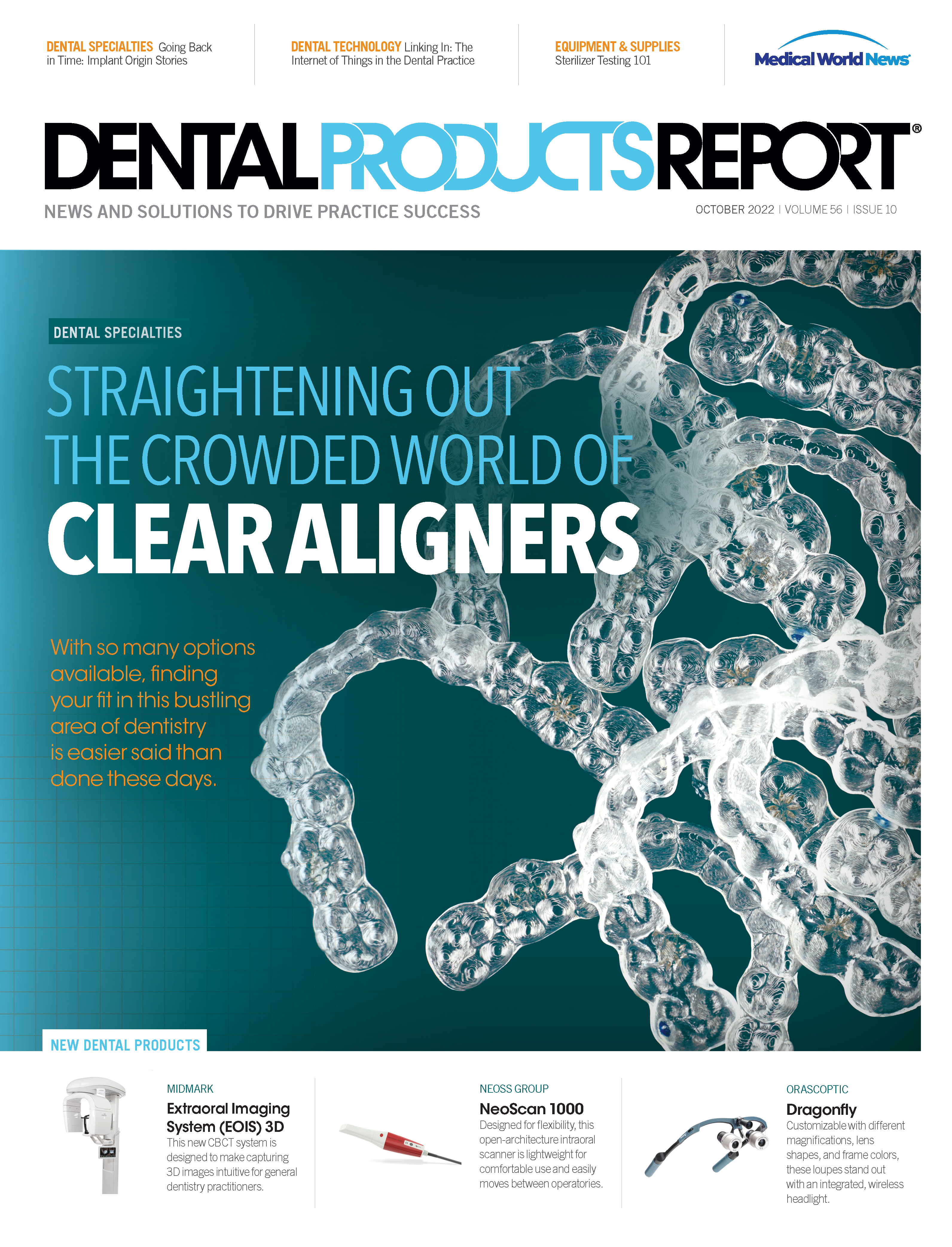
ACTIVA BioACTIVE Bulk Flow Marks Pulpdent’s First Major Product Release in 4 Years
December 12th 2024Next-generation bulk-fill dental restorative raises the standard of care for bulk-fill procedures by providing natural remineralization support, while also overcoming current bulk-fill limitations.